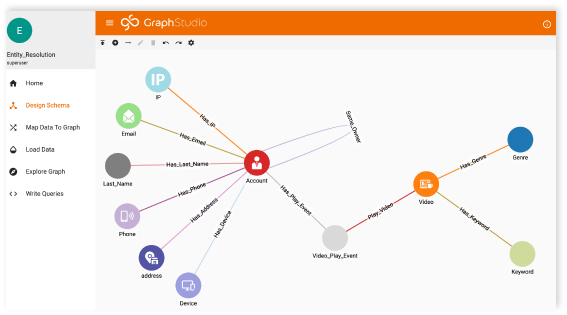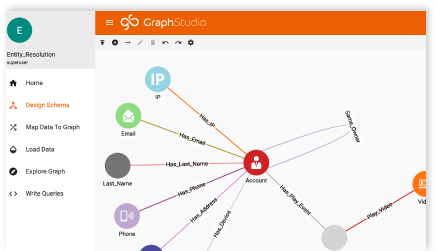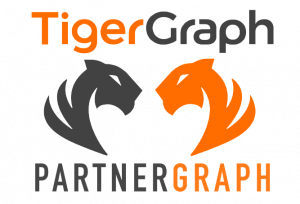How to Achieve a True 360-Degree Customer View with TigerGraph
- Blog >
- How to Achieve a True 360-Degree Customer View with TigerGraph

Today’s retailers need every edge they can get in order to compete with Amazon.
Customers expect retailers to understand who they are, what they’ve purchased in the past, how they prefer to communicate, and what they might be interested in purchasing in the future. In other words, they expect you to deliver an end-to-end customer experience.
With customers ever-easier to lose and ever-more difficult to gain (or gain back), it’s essential for sales and marketing teams to make this level of customer personalization a top priority. In order to do that, retailers need a 360-degree view of the customer.
This Customer 360 approach to Master Data Management (MDM) connects all the data you know about customers (such as contact information, purchase history, customer service records, marketing campaign interactions, and more) and makes it visible in a single place. This connected customer 360 view allows your team to offer a true omnichannel experience and maximize your customer personalization efforts.
But in order to create a genuine 360-degree customer view – and maintain the competitive advantage it creates – your team must be able to bridge your disjointed data silos and harness the resulting connected data.
The Challenge: Disjointed Data Silos
Your customers interact with your ecommerce site or retail locations through a multitude of different channels, between several distinct brands, and across national and global regions.
In the customer’s mind, their interactions form a single narrative, but a retailer’s data often can’t piece together the same story. That’s because each of these touch points creates new data that is often housed in separate systems, tools and databases. With data locked away in these organizational silos, each team – from Sales, Marketing, Fulfillment, Customer Service, and more – only knows a slice of the bigger narrative.
As a result, customers get frustrated, whether that’s from a targeted ad campaign for an already completed purchase, the inability to redeem loyalty rewards, or starting all over with customer service personnel after each contact. Not only are these experiences unpleasant for customers – who might leave for a competitor – but they also represent missed revenue opportunities for retailers.
Traditional technology solutions for this perennial problem are built using relational databases (or RDBMS). These relational databases store customer data such as accounts, contacts, leads, campaigns, and opportunities in separate tables, usually one for each type of business entity.
But while RDBMS are good at indexing data and supporting transactions, they’re poorly equipped to connect data across tables or business entities. When asked to identify complex relationships or patterns across multiple tables, relational databases can lock up or hang the server entirely. A human might be able to pinpoint these connections manually, but never at scale across numerous leads, campaigns, and opportunities.
Fortunately, graph database technology stores and analyzes these human-intuitive connections between data while scaling to trillions of data points.
The Solution: Graph Data Analytics with TigerGraph
In order to achieve a true 360-degree view of the customer journey, retailers need to tap into the power of a leading graph database like TigerGraph.
Graph technology stores your data in the shape of a flexible network or mind map, allowing your data analytics to identify hidden connections and emerging patterns in the relationships between data points. As a result, a graph database provides a seamless customer 360 view by enabling your team to connect different types of information and explore the resulting possibilities.
For example, a marketer can create a graph that identifies the names of the key people involved with an opportunity, along with their roles and the date of their first interaction. With only a couple more clicks, the marketer can identify the specific actions those individuals took, such as watching a video ad, downloading a sample, attending an event, signing up for a free trial, making an early purchase, and more. The graph, or network, of these interactions also displays the ordered dates of each touch point, creating a cohesive narrative for the marketing team to follow.
TigerGraph connects all the information you know about your customers, and using graph data analytics, TigerGraph can infer missing gaps in your data, so you can offer a true omnichannel customer experience and maximize the power of your personalization models.
A Customer 360 Secret Ingredient: Graph Entity Resolution
A big part of creating a 360-degree customer view is managing and merging duplicate data. But merging customer data from multiple sources isn’t always easy.
One particular challenge – and opportunity – in managing Customer 360 data is entity resolution.
In data management, entity resolution is the process of deciding when multiple entities from different data sources actually represent the same real-world entity and then merging them into one entity.
For example, let’s say that three of your data sources included the following customer information:
- Source 1: mailing address, email, social security number (SSN)
- Source 2: SSN, phone number, name, age
- Source 3: email, phone number, gender
In this example, we’ll assume that emails, phone numbers, and SSNs are each sufficient to identify a unique individual (i.e., they are personally identifiable information, or PII). Of course, the challenge is that each of the above sources use different identifiers for the same customer, and each source is missing some amount of customer data from their records. This is a common pattern wherever organizational data silos exist.
The goal of Customer 360 is to resolve these partial entities into a unified record across all data sources and silos that includes any and all relevant PII, such as SSN, email, phone number, name, age, gender, and mailing address.
A native parallel graph database is purpose-built for seamless entity resolution that connects data across multiple sources in order to create a single record.
In this example, TigerGraph would create a Customer vertex (or node) for each customer in the database with connections to differing PII vertices, including SNN, Email, Phone Number, etc. Then, TigerGraph merges any Customer vertices with identical or overlapping PII, following predetermined business rules in order to reconcile varying attributes such as Age and Mailing Address. For instance, TigerGraph can use the Last Updated dates in order to decide which address to use for the consolidated record, or it could use a list of known addresses provided elsewhere.
Graph entity resolution with TigerGraph is significantly easier and more effective for building a 360-degree view of the customer journey than the machine learning methodologies other systems use. In addition, entity resolution is an effective way to unify data for regulatory compliance such as the European Union’s General Data Protection Regulation (GDPR) or for other corporate information governance.
Conclusion
Customers have set a high bar for the personalized service they expect from retailers. And in today’s competitive retail market – with Amazon looming larger every day – having a Customer 360 approach isn’t just a nice-to-have, but an imperative.
Only TigerGraph is scalable enough to join all your data into a single graph database. Harnessing the power of connected data analytics, your team can quickly and easily create a 360-degree view of customer data with seamless entity resolution using TigerGraph.
With context from all relevant departments and with the speed and scale of graph data analytics, you’ll have all the edge you need to serve and delight customers more effectively.
Questions? Please contact us at info@localhost.









